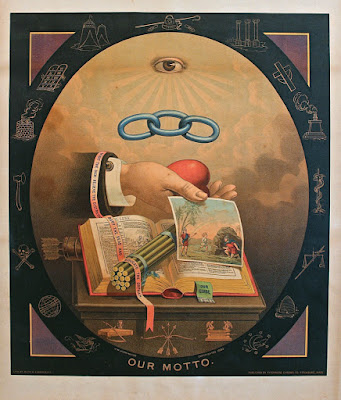Almost every US town has one: that mysterious Masonic lodge with its borrowed Egyptian or Greek details, arcane symbols, and windows and doors that rarely open. In New York City, the huge Grand Masonic Lodge has the moon and sun painted over its entrance on West 23rd Street, while Guthrie, Oklahoma, has the even more formidable Scottish Rite Temple,
with classical columns towering over the prairie lands. What are these places, why are they so pervasive, and what is that all-seeing eye watching?
with classical columns towering over the prairie lands. What are these places, why are they so pervasive, and what is that all-seeing eye watching?
David Byrne of the Talking Heads, who apparently also has “fraternal art collector” on his litany of hobbies, writes in the foreword that there “is an inspiring and wacky solemnity in these organizations — high values reinforced through pageantry and performance in an ecumenical social setting — which deep down must also have been a whole lot of fun.” According the book, between 1890 and 1915 it’s “estimated one in five men belonged to at least one society” in the US. That meant tens of thousands of lodges across the country, each decked out with its own regalia, some mail-ordered from companies dedicated to the demand, others very much DIY.
by Allison Meier on January 12, 2016














